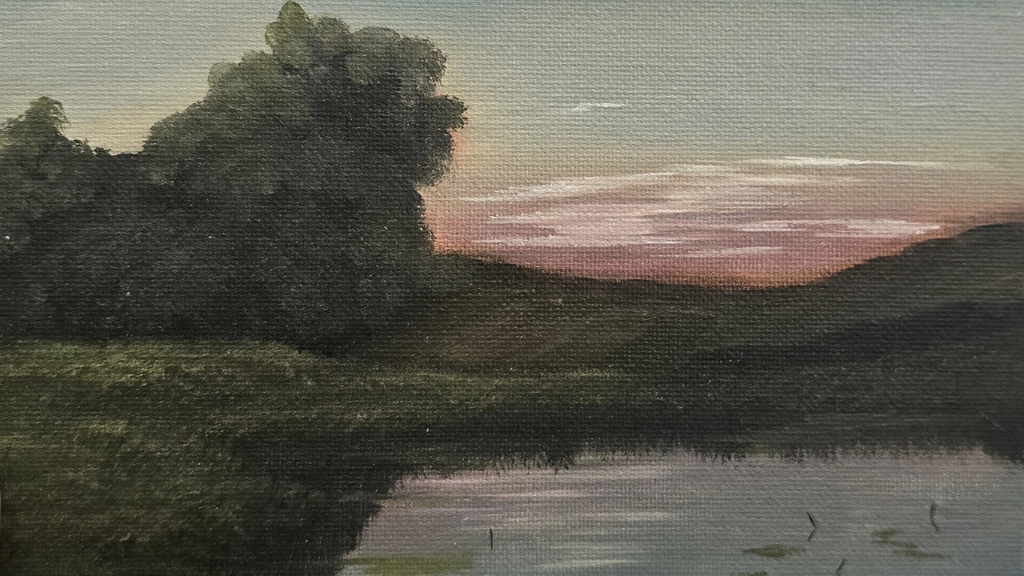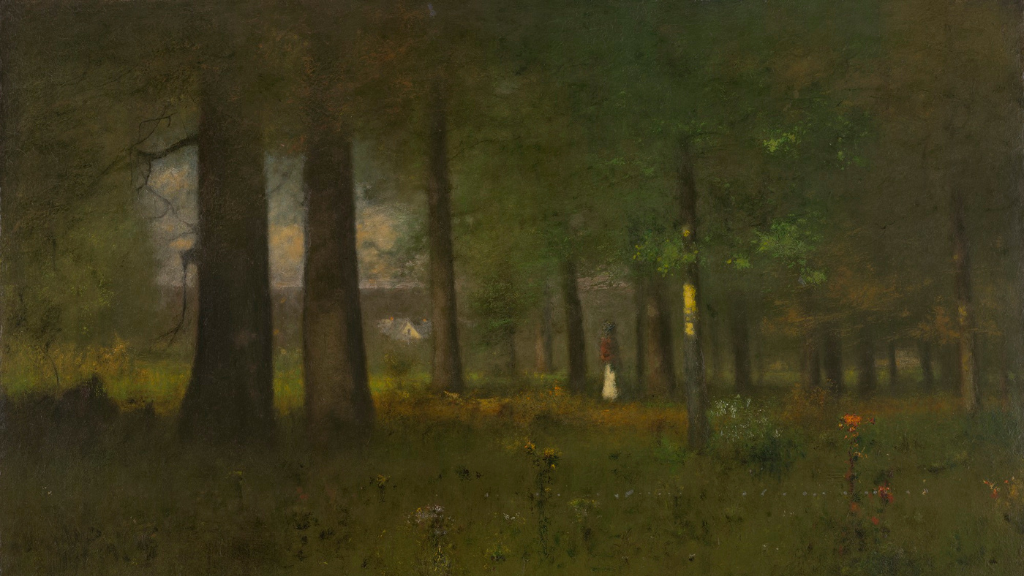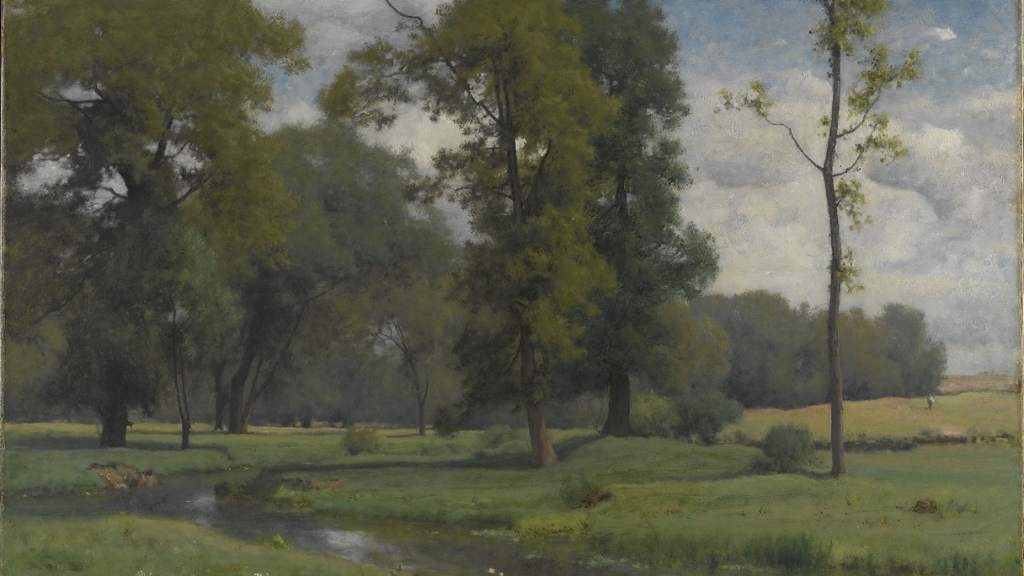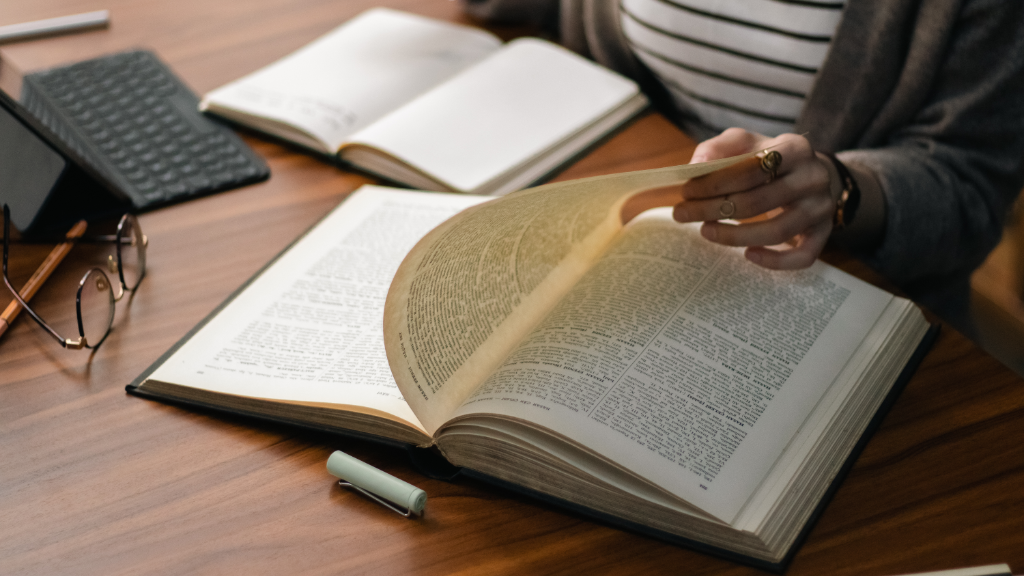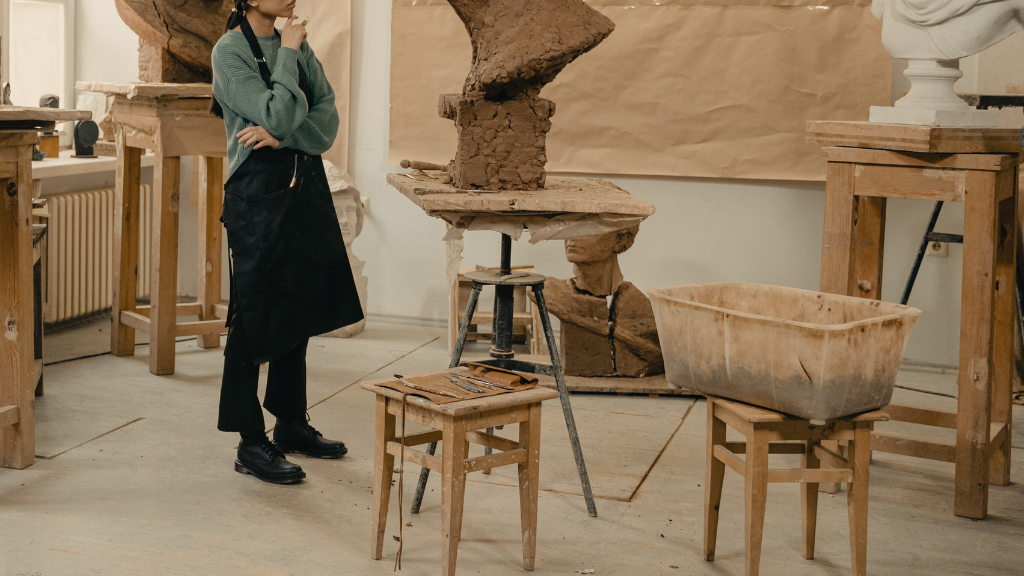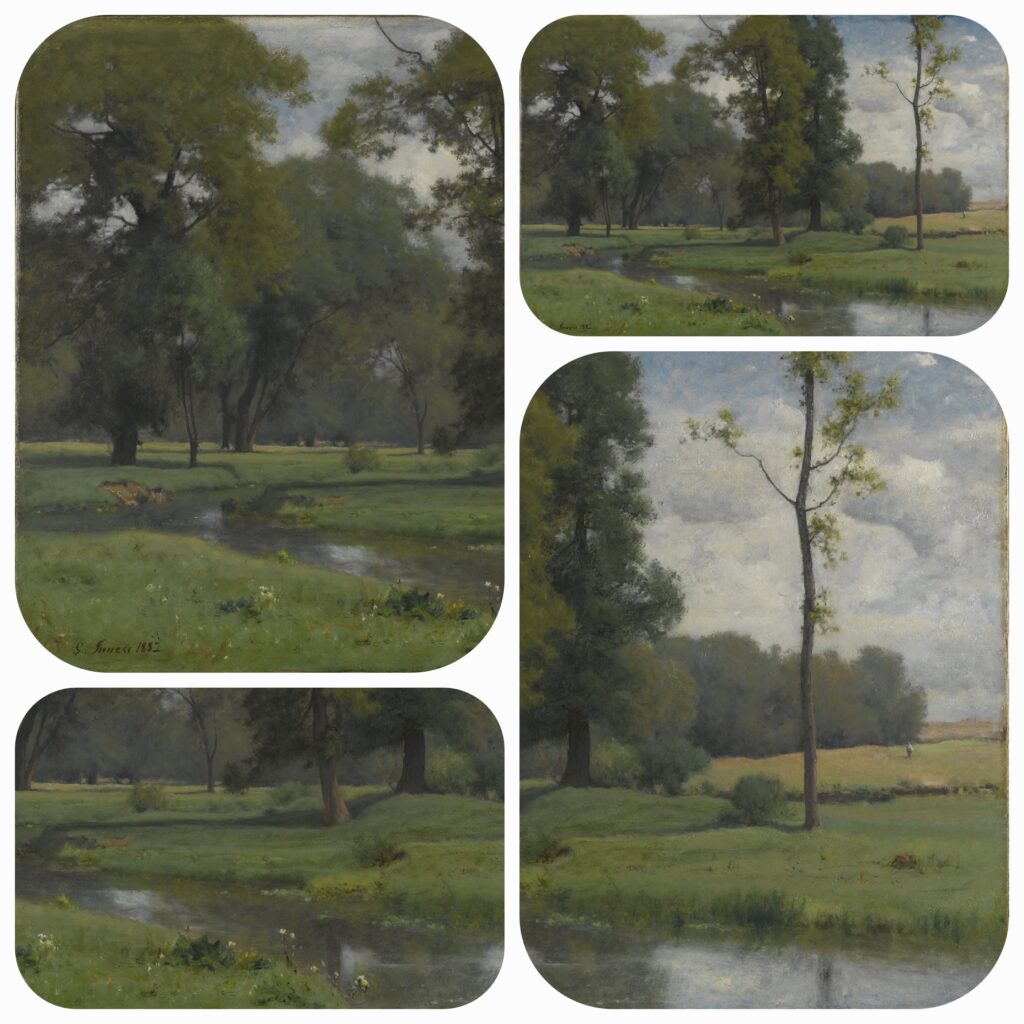
This post explores the importance
of creating a personalized curriculum to learn painting at home. I have been teaching myself to paint for about 5 years rather slowly, but the one thing that has kept me on track is having clear goals—then creating a curriculum to reach those goals. I’ll begin by talking about why a curriculum can be a useful tool if you are teaching yourself to paint, then I will list out 3 areas I’ve focused on in my own curriculums that are useful to think about when creating your own! At the end of this post, there will be an example of a mock curriculum similar to one I used last year while diving into landscape painting more seriously. Lets get started!
Creating a Curriculum to Learn Painting at Home
Creating a curriculum to learn painting at home should always begin with a goal. Similar to a college course, your goals will work as a kind of course description that outlines your objectives and desired outcomes. Also similar to a college course, you’ll want to include weekly tasks, short term projects, and tools for the particular curriculum you’re creating. In the next section, I’ll show you what I mean; by breaking one of my painting curriculums down into 3 key areas of focus, and then I’ll show a mock calendar that explores what my curriculum looks like on a week to week basis.
As you begin painting, your goals may change—your style or preferences as a painter may shift and lead you from, for example, landscape painting to figure painting. This is completely normal, and the beauty of creating your own curriculum is that you can alter it when necessary. It is important to note, however, that if you create a three month curriculum to begin learning ocean scapes, that you should do your best to complete what you’ve started. You never know when a technique will be useful for another style, or lend you an opportunity to experiment or combine different subjects to create a novel painting! In general, finishing what you start is important practice to keep yourself accountable and develop discipline as an artist.
3 Areas of Focus When Creating a Curriculum to Learn Painting at Home
Basics & Technique
Once your goals are set, you’ll need to figure out what basics and techniques will be necessary to reach those goals. For the remainder of this post, I will use the example of creating a curriculum to learn landscape painting to better illustrate what I mean. When creating a curriculum to learn landscape painting, I’d begin by collecting resources that cover basic techniques and methods to begin landscape painting. These resources can look like how-to books, YouTube guides, or an online course that explains the basics. These tools should include things like perspective, color theory, and brush techniques that will help me understand what is necessary to accomplish my goals.
While it is absolutely possible to just go out and begin begin painting landscapes without tools or without understanding the basic techniques required to create landscapes on canvas, it will be much easier for most individuals to begin with some research and understand the important foundations of painting. For example, if you try to paint clouds without any prior knowledge, you may not realize that distant clouds in a painting will not only be much smaller, but they will often be closer to the horizon line than nearer clouds. Don’t worry too much about buying a bunch of resources, many of the tools you’ll need can be found for free online!
Task: Do some research, and find tools that cover the basics of the style you want to learn.
Studies and Value Studies
Once you’ve begun working on techniques and understanding the foundations of painting, break your goals down into smaller parts and begin working. To do this with landscapes, I would recognize the different parts of a landscape: the sky, the background, the foreground, and the elements like trees, water, or brush and vegetation. This is where studies become especially helpful. I’d begin by working on skies for a few weeks, then mountains or hills, and then smaller elements.
In this way, you’ll start to learn what is required to painting those different parts of a landscape before brining them all together. Another aspect of studies that I’ve found useful are small thumbnail studies. I’ll take sheets of canvas paper, cut them to the size of large business cards, and work with a small range of values between black and white (usually 5 values including black, dark grey, medium grey, light grey, and white) to paint tiny and simple landscapes. This practice will help you to warm up, improve your eye, and help you work on scapes in a low stakes way. I’ll talk more extensively about value studies in another post!
Inspiration
A final and important aspect of creating a curriculum is knowing what inspires you and staying inspired. For example, I adore tonalism, painters like George Inness are a big reason why I love landscapes and aspire to paint them. Take some time to gather paintings, styles, and artists that truly inspire you and keep those inspirations near by. To do this you can create a Pinterest board, a file on your computer, or take a weekend to create a vision board to hang in your workspace. Staying inspired is an easy way to keep progressing and reminding yourself what you aim to achieve.
Mock Curriculum
Now that we have discussed some important areas to focus on when creating a curriculum to learn painting, I’ll show you a mock curriculum that I used when learning landscape painting in 2024! Along with this, I’ll also share one of the more successful landscape studies I completed, which was a highlight of my consistent progress and work. I’ve created my mock schedule as a download here if you would like to follow along yourself, adjust the schedule as needed. Many of the tools and tasks I used are discussed here on the blog, so if you get stuck on anything, you can find in depth discussions on the blogs Art page.
Conclusion
We all improve at our own pace, and many of us have a range of responsibilities in life that keep us from exploring our artistic abilities. I, myself, have been learning to paint amidst working full time, going back to school, and on top of other interests like learning languages and keeping a consistent reading practice. I say this because it IS possible to learn an artform even in the hustle culture may of us exist within. I believe that creating a personalized curriculum to learn any artistic medium can be a great way to dive into our creativity in an intimate and flexible way. I hope this post has helped inspire you, and best of luck on your art journey!
Below is one of my later landscapes after a few months of consistent practice. This was done though a guided tutorial! While that may sound easy, it truly took months to create a piece of this depth, even through a tutorial. I learned a lot during this time including making gradients and simple clouds, water and reflections, painting simple trees, and painting grass (which has been my biggest struggle).
